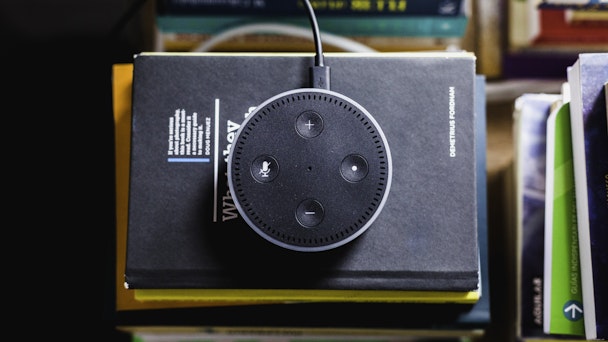Why marketers should pay attention to the Amazon versus Google showdown at CES 2018
From the Consumer Electronic Show (CES) 2018, Innovid chief technology officer Tal Chalozin helps connect the dots between this week’s tech announcements, and what they mean for how marketers will spend their media budgets in the mid-to-near future.

Consumers will soon start to expect every interaction with a device, a service or even with a brand, to know the context
CES is the annual marquee event for some of the world’s largest hardware manufacturers and has traditionally been the launch pad for their ‘hero devices’ in the year to come. My initial observations are that ‘voice activation’ plus ‘Artificial Intelligence’ (AI) are the buzzwords of this year’s show, and with it will enable hyper-personalization; plus the future of TV will be distinguished by software and distribution.
Amazon and Google vie for ‘everywhere’
Observers need only look at the branding around the Las Vegas strip, plus the halls of the Las Vegas Convention Center (LVCC) hosting the 175,000 attendees to see how the power structure has flipped in recent years.
Outfits with software at the very core of their DNA now make the CES headlines. For instance, last year Amazon with its home assistant offering Alexa was the darling of the show – despite the e-commerce giant not officially attending the event – and this year it has gone about hammering that message home.
This year Amazon’s Alexa is much more ubiquitous at LVCC, with the company announcing several integrations with hardware manufacturers, most notably with the company announcing a tie-up with automotive manufacturer Toyota earlier this week.
This activity helped Amazon steal a march in the ‘home assistant market’ with the Seattle-based outfit controlling 70% of the US market as of the close of 2017, according to eMarketer data.
When we consider that Amazon is set to double-down on its advertising offering then the media industry should definitely take notice.
Google mounts its comeback
Of course, one key point to consider in the eMarketer data is how the Google Home offering is a far distant second to Amazon (see chart below). How long has it been since we’ve seen Google anywhere but number one in any product category that it chooses to compete in?

Of course, Google is also using this year’s show mount a comeback partnering with 15 hardware manufactures as well as TV outfit DISH, plus the launch of Android Auto – not to mention coating the Las Vegas MonoRail with Google Assistant branding over the week – to boost awareness of its presence (see video at top of page).
Regardless of the power struggles at play, marketers curious over the possibilities posed by such technology advances should sit up and take notice, just like the prescient few who took interest in e-commerce and search engines in the late 1990s.
It’s important to note that as home assistant interfaces find more integrations, people starting to feel comfortable adding it to their lives. Marketers should start thinking of the best way to adapt to a world where the communication interface is not always a screen, options are limited and importantly be respectful and less invasive.
Consumers will soon start to expect every interaction with a device, a service or even with a brand, to know more about the context, to adapt and be smart. That changes the rules of the game, as brands who dial-up their skills will get attention and rivals who fail to keep apace will drop dramatically in acceptance.
Scaling of the future of tv
Likewise, traditional multichannel video programming distributors (MVPDS) such as Hulu are entering the advertising game more-and-more. Earlier in the week, Hulu revealed that its total subscriber base in the US has hit 17 million, and 54 million globally, plus that it generated over $1bn in advertising revenue last year.
Meanwhile, this week we also learned that new players are starting to make their presence felt in the traditional media world with Yahoo announcing it is to stream NFL playoff games, plus Fox Sports announcing that it will partner with social platforms such as Twitter and Snapchat for FIFA World Cup coverage later in the year.
New TV platforms and services are now not only driven by content but actually led (and most importantly) differentiated by software and distribution.
Discovery and access become really the key to unload consumer adoption, and marketers dipping their toes must follow this trend (just look at Hulu’s $1bn ads business now) and rethink ad experiences specifically when playing in the branded entertainment world.
Collectively, these announcements represent a seismic shift for the media industry and fully spell out the importance of data capture (and analysis) to keep pace with audiences’ media consumption trends, and advertisers plus media owners alike need to tailor their messaging in a way that’s relevant to consumer demands.
